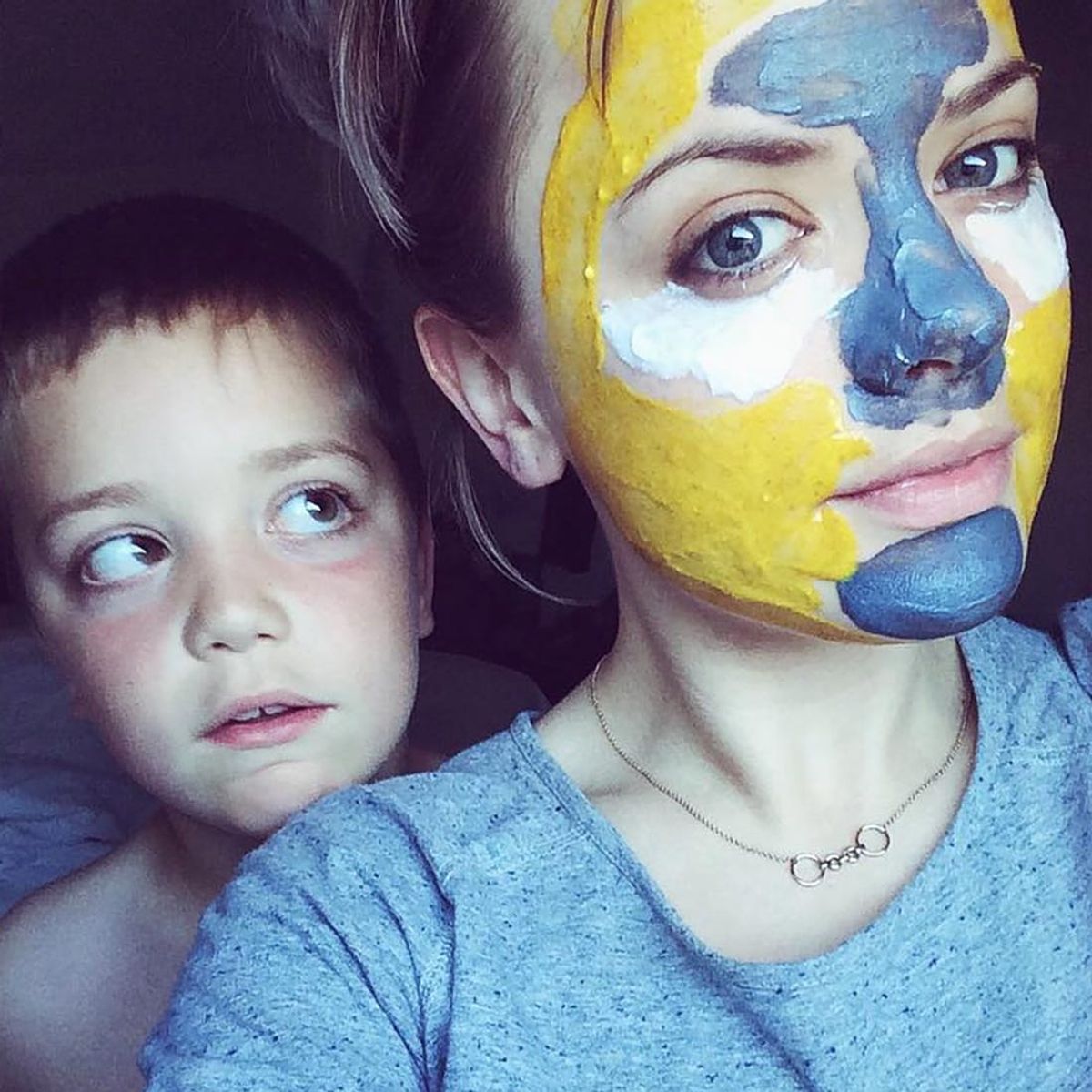Your skincare routine just got a serious upgrade.
Your Complete Guide to Becoming a Pro at Multimasking

The verdict on multitasking is still out — some hate it and some love it. But multimasking? Now this is an idea we definitely can all get behind. As the name suggests, multimasking is an emerging beauty trend in which you apply not one, but multiple masks at once to target the specific needs of all the different areas of your face. Maybe your T-zone is breakout central while your under-eyes could use some major de-puffing. Do you use a mask designed to treat breakouts or one that’s meant for hydrating? The answer? Use them both!
While multimasking is just now having its Instagram moment, it’s an idea that has been used by the beauty pros for some time now. Andrea Lembkey, the owner of Dermaplus Skin + Body, a skincare boutique in San Francisco, tells us that she’s been using multimasking on her clients for close to 10 years now — but her process is a little bit different from the patchy pics you’ve been seeing in your feed.
Lembkey explains that at Dermaplus they use a “Three Layer Mask,” which involves applying three different treatments to the skin, not necessarily separately but on top of one another. They begin with a botanical oil mask so the skin can absorb concentrated nourishment and vitamins. They then layer on a recovery gel mask that delivers water molecules to the skin’s deepest layers for some much-needed hydration. Finally, a mineral clay mask is applied, which helps calm inflammation, detoxify and heal the skin.
But don’t think that you have to hit up the spa for this kind of luxe treatment. Dermaplus’s three-layer mask is available for an at-home application. Boscia also sells a Multi-Masking Medley, which comes with four different masks designed to purify, brighten, hydrate and mattify skin. To get the most out of multimasking treatments, Lembkey advises doing it at home about once a week. If you want to build a super skincare combo that’s designed just for your face, here are a few key ingredients to look for when crafting the perfect multimask cocktail.
If Your Problem Is: Acne
Try a mask with sulfur. If your skin has stopped responding to common acne fighters like benzoyl peroxide or salicylic acid, it may be time to give sulfur a try. The ingredient promotes cell turnover by helping shed dead skin cells and other buildup known to clog pores and cause breakouts. Try Origin’s Out of Trouble Mask ($25), which includes sulfur as well as zinc oxide and camphor to help quickly clear up troubled areas.
If Your Problem Is: Dry Skin
Try a mask with honey. Known for its ability to absorb and retain moisture, honey is rich in natural sugars that help to create a lasting moisture-preserving layer over the face. DIY honey masks are a dime a dozen, but if you’re looking for a treatment that’s a little less sticky, give Sephora’s Honey Mask ($6) a try.
If Your Problem Ps: Puffy Under-Eyes
Try a mask with aloe. Aloe is often used under the eyes to help treat dryness and wrinkles. It also contains essential vitamins and anti-inflammatory properties, making it a perfect solution for the sensitive under-eye. For a budget-friendly option, simply apply cold aloe vera gel directly to the under eye to soothe and de-puff eyes. However, if you want to mix aloe vera with a few other ingredient known to work some magic on puffy eyes, you can also treat yourself to this Karuna Renewal Eye Mask ($36).
If Your Problem Is: Aging Skin
Try a mask with vitamin C. Whether you’re 15 or 50, it’s never too early to start including vitamin C in your beauty routine. The vitamin helps fight aging by protecting skin from damaging free radicals like UV rays and pollution. To step up your topical intake of this ingredient, try Boscia’s Vitamin C Brightening Hydrogel Mask ($8).
Do you multimask? What are you go-to combos? Share with us in the comments below.
(Photos via @hannahope and @evaklenzkitenge)



















